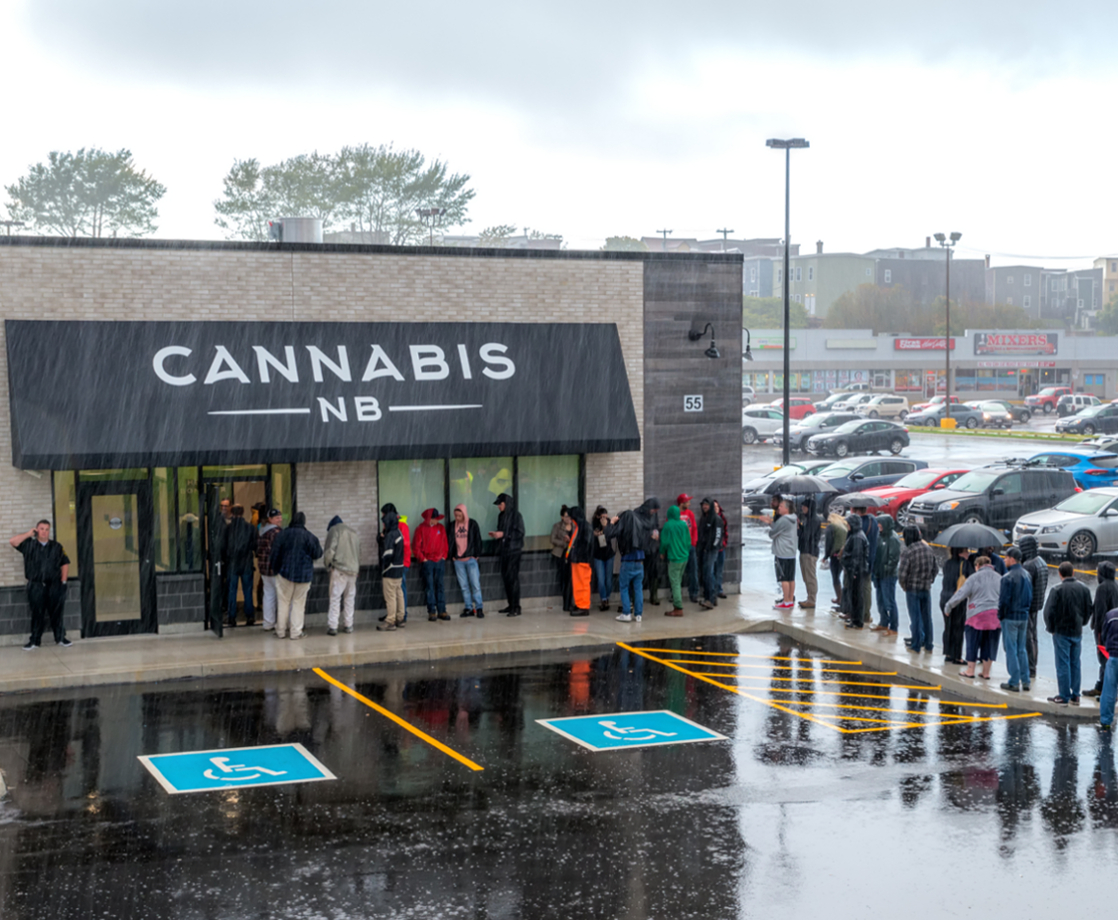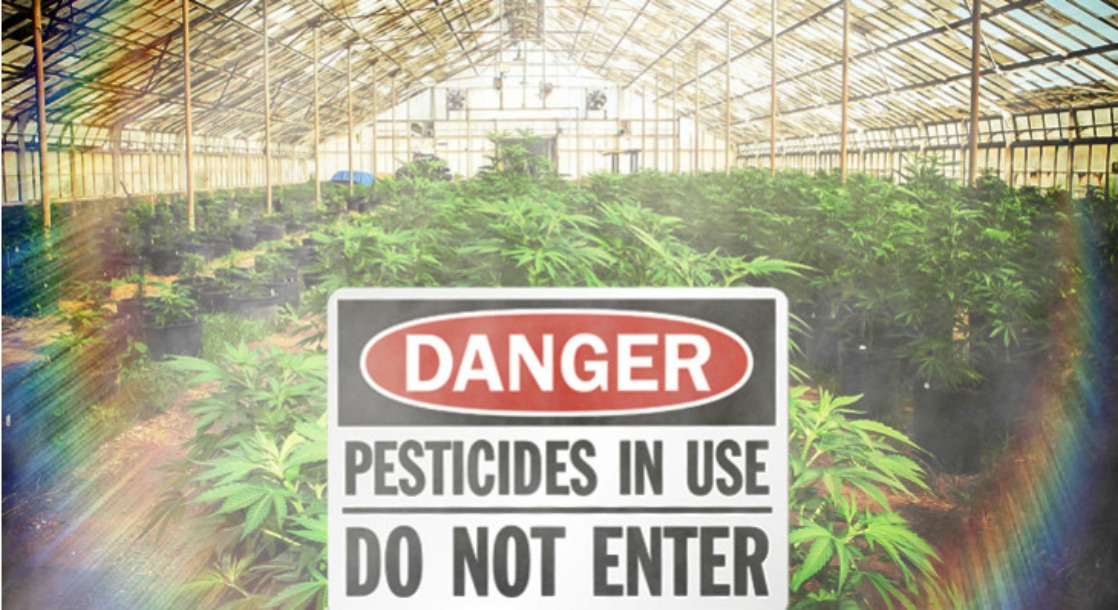Customers line up for first day of legal cannabis sales in New Brunswick; lead photo via iStock
On the first Friday after weed was legalized in Ontario, I had tickets to a concert in Ottawa’s ByWard Market neighborhood. Even if you’ve never been to ByWard Market, you’ve probably been to somewhere like it: a downtown city block where people outnumber cars and where the main objective is commercial. There is a large illuminated sign that says OTTAWA where tourists take pictures, about a half-dozen stores selling tourist tchotchkes, and a cheese market where one time Barack Obama bought a cookie while he was president, and now anyone who goes there is reminded of that in perpetuity. It’s the neighborhood — every major city has one — that’s supposed to be the neighborhood; the distilled essence of a city, its jubilant and photogenic core.
I expected to see people smoking weed there, on the one hand because there was a concert — it was an indie west coast band for whom half of a joint is, in my opinion, recommended — but on the other because people already tended to smoke weed there, outside the market’s many bars and clubs. I assumed that since weed was legal now, the cloud of pot smoke that usually hangs in the air there would only be thicker.
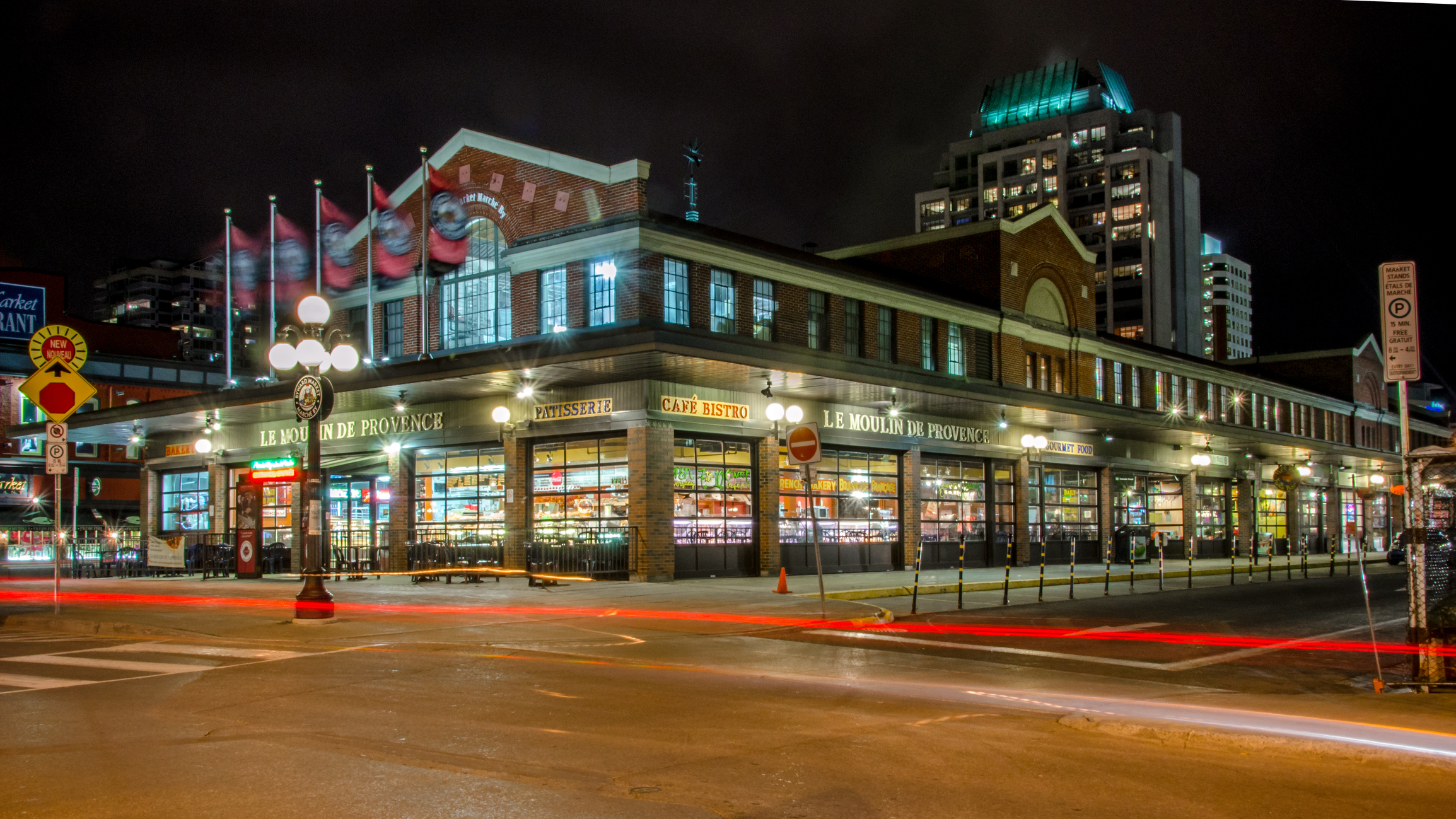
Ottawa's ByWard Market Square; photo via iStock
Instead, barely anything. Between the opener and the main act, I only saw one group huddled anxiously in an alley to share a joint; it was as if nothing had changed.
I realized that if you were looking for some grand insight about legalization and its impact on a country where cannabis use is as normalized as Canada, this was it: nothing was really going to change. When you boil it all down — all the anxiety, the politics, the what-on-Earth-will-happen hype — legal pot might be a bit of a novelty, and even though cannabis legalization had dominated the headlines for weeks, life was going to go back to normal.
One month in, it’s still hard to figure out how, if at all, life is changing because of legalization.
**
Trying to pull a single narrative out of the question ‘How is legal weed working in Canada?’ is tough. What Canada has isn't one single version of legalization, but at least 13 — one in each province and territory, where local governments wrote the rules that actually define the experience of legal marijuana. Break that down a bit further, and what you have in Canada is thousands of little legalizations. In Richmond Hill, Ont., a suburb north of Toronto, the question that residents and their town council are debating is whether to allow dispensaries at all; in its next-door neighbor of Markham, the council recently banned the smoking of cannabis in public altogether. An 18-year-old in Ottawa can’t smoke pot at all, unless of course he crosses one of the city’s five bridges into Gatineau, Quebec.
The point is that nobody in Canada is living in a single, unified post-prohibition country. We now exist under what Jason Markusoff called (somewhat uncharitably, though not falsely) a “splotchy patchwork” of cannabis laws.
But that’s life here: nearly every matter is governed by a splotchy patchwork of laws and regulations pretty much all the time. Liquor laws are different depending on which province you’re in; so is the official language. We all learn to make do and, most of the time, get along.
Pot legalization was, says Joshua Ostroff to MERRY JANE, “basically Y2K.” Ostroff, previously the managing editor of pot media company Lift & Co., now a freelance journalist and frequent commentator on CBC Radio, says that all the hype around legalization ahead of October 17th was, essentially, much ado about nothing. “As we were going into it on like, October 15 or 16, I started realizing everyone was ramping up their coverage for C-Day” — he’s jokingly referring to the name given to October 17 by the New York Times’ Canadian bureau chief Catherine Porter, which in fact nobody was calling it — “and then it happened, and nothing changed.”
People, he said, “kept on doing what they’d been doing before. Everyone was predicting all of these things like driving concerns, or freaking out that people are just going to be smoking weed on the street everywhere.” None of that really materialized though.
Thinking in transformative terms is an easy trap to fall into, since the matter of legalizing cannabis operated on a binary spectrum — it was illegal, and then it wasn’t. But in truth, for most people, cannabis legalization wasn’t actually an issue of what you can and can’t do, but a more unromantic adjustment of supply. While there were anecdotal stories of cannabis first-timers lighting up, there’s no evidence out there that suggests newbies flocked to pot shops on 10/17 in droves, or on any of the days after for that matter. “People didn’t go, ‘Now it’s going to be legal, so now I’m going to do it,” said Ostroff. The people who lined up to buy weed in the early days were people who already smoked weed, he points out. This was made painfully apparent by the choice of interviewees on the country’s national networks. “It hasn’t had much of an impact on people.”
Business is booming….or should we say budding for this Halifax cannabis store. @Brett_CBC talks to their first customer, Tim, about his #legalizationday experience. @CBCHH #CBCNN pic.twitter.com/0vlBEoeFwI
— CBC Morning Live (@CBCMorningLive) October 17, 2018
Which isn’t to say that it won’t, or that it can’t — it’s just that assessing the impact comes in the long term, not the short. Most of the country is content with stepping slowly into its legal weed future, rather than diving headfirst. When you talk to cannabis company executives, or attend press conferences with government ministers, you’ll often hear them talk about ‘Legalization 1.0,’ meaning the legal market we have this year, or ‘Legalization 2.0,’ for a legal market that includes edibles and concentrates, a ‘Legalization 3.0’ for whatever comes after that, and so on.
**
Yet legalization has not been without its problems. “We have a lot of maturing to do as an industry,” said lawyer Trina Fraser, who advises several of Canada’s licensed producers on regulatory issues. “There’s lots of things we’ve still got to do. The supply will come, and the next two or three years, at least, are going to see constant evolution, improvement, and problems.”
The biggest concern was that there just wasn’t enough weed in the early days of legalization to satiate popular demand. Supply and logistical issues have cropped up in most provinces, especially the ones where the government was operating sales. In Ontario, for instance, a major backlog at the Ontario Cannabis Store’s (OCS) warehouse meant that some customers had to wait up to two or three weeks to receive their order, and though several explanations were offered by the government and the industry itself, it’s still not totally clear what led to it. The most likely cause is that the OCS was simply overwhelmed by the orders. (The government, curiously, has repeatedly declined to name the company it hired to operate the warehouse, citing security concerns.) People weren’t happy: the provincial ombudsman received over a thousand complaints, but eventually the backlog was cleared, and stress on the system dissipated.
Likewise in Quebec, government-run pot stores opted to close down for three days a week to help temper demand and keep shelves from running out of product.
But “these are good problems to have,” says Fraser. “The supply will ramp up, and as the stores open up, it will ease the tension.”
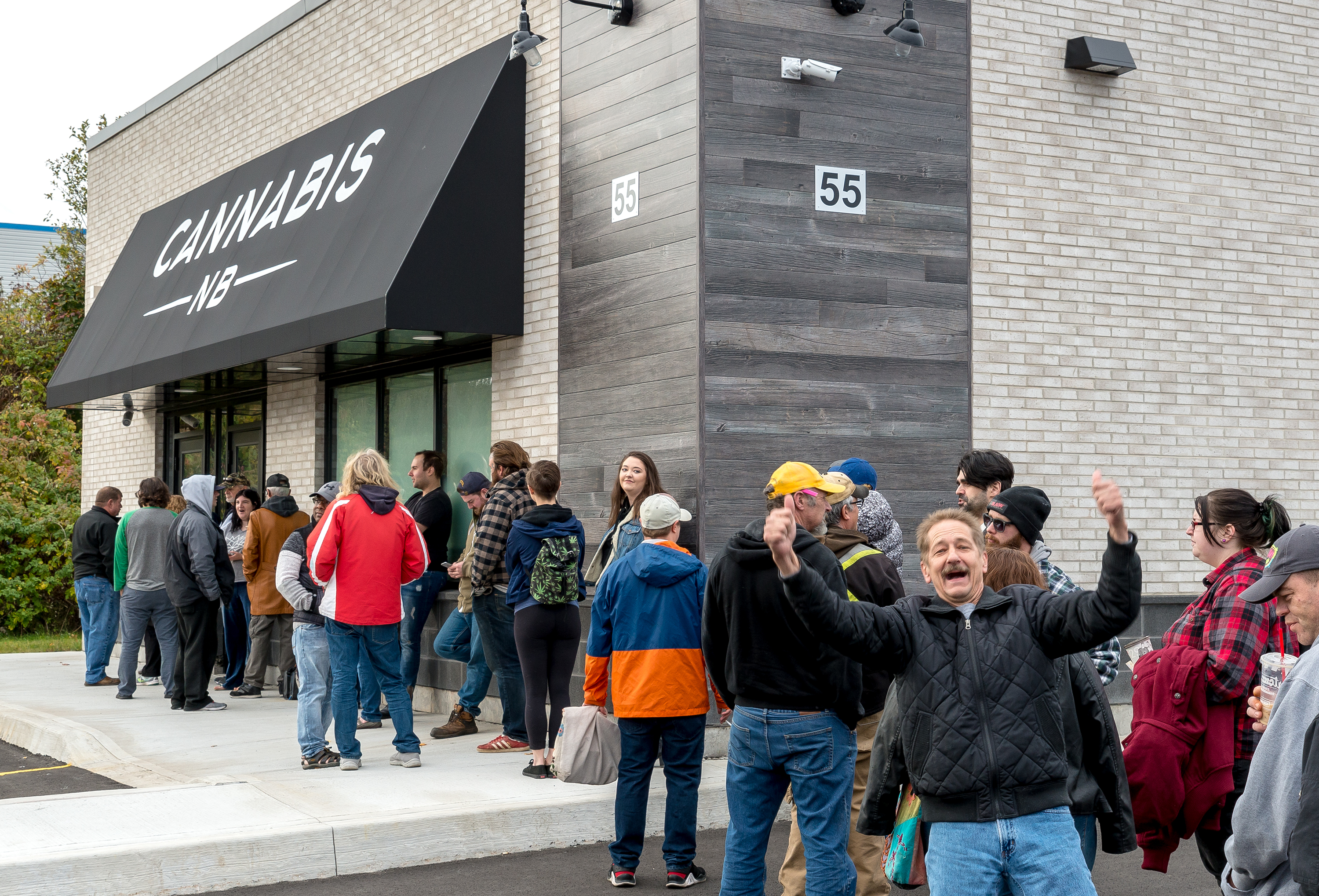
Patient customers wait for legal pot in New Brunswick on October 17th, 2018; photo via iStock
According to an Ipsos poll released on the one-month mark of legal sales, two-thirds of Canadian cannabis users had bought product from the new system, while 35 percent of the country’s tokers are apparently sticking with their black-market dealer.
That’s right on track with what studies predicted ahead of 10/17: a 2018 report from Deloitte predicted that “current cannabis consumers are expected to move nearly two-thirds (63 percent) of their purchases to legal channels, whether through brick-and-mortar retailers or online channels.”
“The only way this would be a complete failure is if nobody wanted to buy the product,” says Fraser. Given the long queues at many stores, that certainly wasn’t the case; all things considered, a lot of people would still rather buy their weed safely from a legal provider.
Medical patients, however, have also reported shortages of products. Tilray was one licensed producer that got singled out, as they ran out of dried bud. According to Tilray spokesperson Chrissy Roebuck, the company "received an unusually high volume of orders on Tilray medical cannabis products this month. In anticipation of a potential stock-out of whole flower, we proactively informed patients of this temporary supply interruption which resulted in an additional high volume of orders on oil and capsule varieties, as well." Other producers have reported similar shortages due to rushes on medical products.
University of Waterloo economist Anindya Sen was less sanguine about the sector’s early performance. He argues that the impacts of shortages — which were anticipated long in advance — came on quicker than expected. “To be quite honest, I didn’t anticipate the shortages to happen so quickly,” he told MERRY JANE. “I expected [retailers] to have enough in their stockpile to get us through two or three months.” He argues that more could have been done to beef up resources on the regulatory side in order to get more producers approved.
The government was aware of this need before legalization took effect, though. Andre Gagnon, a spokesperson for Health Canada, said in an email that in the lead-up to legalization, the government department hired 375 new people, in part to help improve their ability to approve licenses and clear out the regulatory backlog.
“I’m hopeful that we’re going to see a lot more momentum in licensing from Health Canada now, they’ve ramped up their resources,” says Fraser. “I have many clients who are amongst the 600 [businesses] who are still waiting for a license.”
Shortages, she said, won’t be permanent. “I see what my clients have in the pike as far as new capacity coming online, new genetic materials coming online, new product types coming online,” she says. “I’m really excited by it.”

A traffic stop in Nova Scotia; photo via iStock
For police, very little has changed post-legalization. There have been raids of black market dispensaries in major cities, but the punishments have mostly been fines and seized product, as opposed to trafficking charges. The RCMP wasn’t able to provide MERRY JANE with any data on the number of cannabis-related arrests they’ve made, and declined to comment for this article.
Similarly, despite much hand-wringing pre-legalization regarding the issue of cannabis-impaired driving, the Canadian Press’ recent survey of police forces found that it hasn’t materialized as a significant problem “Police forces in Vancouver, Regina, Newfoundland and Labrador, Yukon, Truro, N.S., and Kensington, P.E.I., all said they hadn't noticed a significant change in driver behaviour since pot was legalized on Oct. 17.” The Press also noted the small number of tickets issued in Vancouver: “Const. Jason Doucette said Vancouver police have issued 18 violation tickets under provincial cannabis laws since Oct. 17. The majority of traffic-related tickets were issued because pot was not properly stored or passengers were using weed in the vehicle.”
**
At this point, though, determining how well or poorly cannabis legalization is going is hard to track in real terms. Statistics Canada forecasts that Canadians could spend around $1 billion in the final quarter of 2018, though that is entirely based on projections; accurate sales data, says Sen, would be “neat to see” but since many cannabis retailers are privately operated, there’s no clear picture on how sales are going on a macro level. “What you want is not a snapshot of different firms; you want market aggregates,” he says. “I think it’s necessary. We need to understand societal trends.”
(The stats that do exist were largely compiled in the week after October 17, and suggest that sales are strong, though those numbers exist without any comparisons that might help assess whether they’re exceeding or falling below expectations.)
Culturally speaking, though, much of the country is now going where some parts of the country have already been for some time. Anyone who has been to Vancouver knows that smoking weed openly on the streets has been commonplace for decades, after the city’s police rolled back their enforcement of small-time possession laws in the late 1990s; Ostroff, who grew up in Vancouver back then, said that “it just became a part of life.” That, he says, is a good way to think about where the country is going now. “If people were paying attention to British Columbia, this is what they would’ve expected,” he says — which is to say, that nothing really changes. The excitement of the first week dies down, and everything goes back to normal.
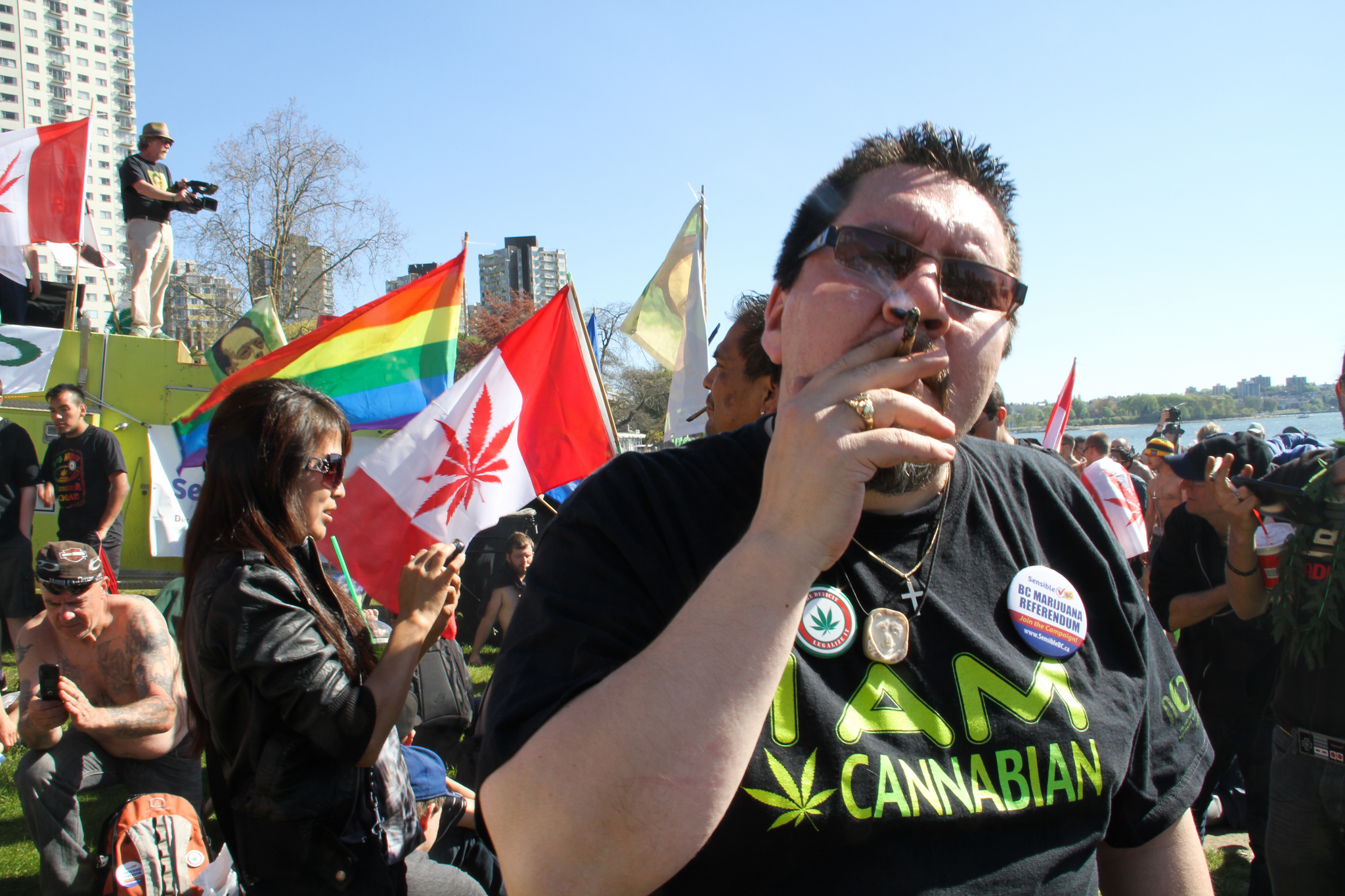
A toker at the 2013 Global Marijuana March in Vancouver, where public consumption has been visible for years; photo via Cannabis Culture
What you think of legalization depends mostly on the scale on which you’re willing to assess it. It’s easy for customers to get caught up in thinking that a legal regime that has some tension in it now is one that will have problems forever, but it’s a fallacious notion — most producers and industry members think of cannabis legalization in years and decades, not months and weeks.
“I think that what’s happening is good for the industry,” Ostroff says. “In the grand scheme of things, it’s rolling out smoothly and it’s becoming an accepted part of life.”
What is required now is patience, says Fraser. Patience to let the industry take its course, and trust that the systems in place will work in the long run, even if that means tolerating some “annoying” aspects in the short term.
“We are coming off a century of prohibition,” she says. “I’m a little more forgiving of us as an industry.”


